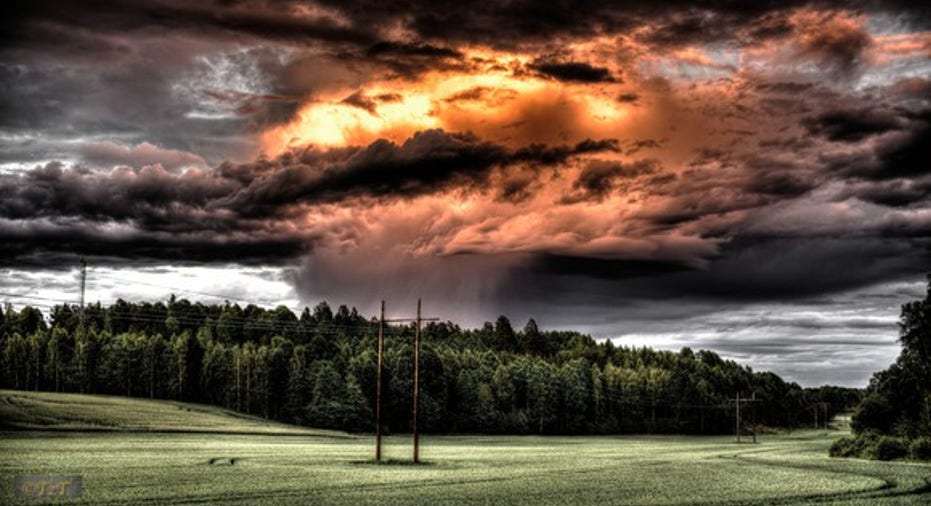How Did the Canadian Wildfires Affect Chevron's Operations?

Forest fire. Source:Pixabay.
Canada recently experienced one of its largest forest wildfires in history. The combination of dry weather, warm temperatures, and high winds created a lethal combination that fed, and spread, the flames.At its widest point, the fire covered hundreds of thousands of acresin Northern Alberta and knocked out 1 million to 1.6 million barrels of daily crude production. Given that the fire has had a big effect on production, let's analyze how the wildfire affects Chevron .
Chevron operations in Alberta
Chevron doesn't have much of a presence in Alberta.In terms of ownership, the company owns a 20% nonoperated working interest in the Athabasca Oil Sands Project near Fort McMurray and holds 228,000 net acres in the Duvernay shale play inAlberta. In terms of production, the oil and gas produced from the Duvernay was minimal last year, while Chevron's ownership of the Athabasca Oil Sands Project entitled it to roughly 47,000 barrels of synthetic oil per day.
Chevron operations in Canada, Source: Chevron investor relations.
Assuming a realized price of $33 for every barrel of Western Canada select, a complete shutdown of the Athabasca Oil Sands Project would cost Chevronroughly $1.55 million of lost revenue per day. With the fire under control, workers now coming back, and the typical facility ramp-up time averaging around 10 days, the wildfire will probably affect production for 15 days and cost Chevron around $23 million in lost revenues. Because local newspapers reported thatthe Athabasca Oil Sands Project was still operating but at a reduced rate on May 10, the lost revenue could be lower.
For a company of Chevron's size (2.62 million BOE per day of production; $23.56 billion of revenue last quarter), the supply disruption isn't a big deal in the grand scheme of things. Because news of the fire sent Brent prices higher, Chevron might not have lost any revenues from the event when factoring in the revenue gains from the price increase. In terms of capital costs,the capital expense damage to Chevron is minimal because the wildfire is now under control and oil infrastructure wasn't damaged.
Unlikely to affect how Chevron allocates capital
In the long run, the wildfire is unlikely to affect Chevron's investment decisions. Most people understand that wildfires of the current fire's magnitude are a one-time event, and further disruptions of that size are unlikely to occur. Given the current low oil prices, building new oil-sands facilities was already out of the question economically because the oil-sands projects aren't very competitive in terms of full cycle costs. Analysts estimate that agreenfield oil sands mine requires a WTI price of $85 per barrel or higher to break even, and a steam-assisted gravity drainage project requires WTI of $55 per barrel or higher to deliver a 10% return on investment. Further hampering oil-sands investments are the environmental concerns and the fact that it takes years to go from initial construction to production versus months for horizontal drilling in shale plays.
The fire reminds investors of the frailty of supply
The Canadian wildfire reminds investors of the frailty of supply. Although 96 million barrels per day of production are economical at current prices, natural disasters and political upheaval do and will reduce that amount, sometimes substantially. Production in Canada has fallen 1 million to 1.6 million barrels per day because of the wildfire. The labor strike in Kuwait knocked off 1.7 million barrels per day of supply for several days before it ended. Production in Nigeria has dropped off sharply by several hundred thousand barrels per day because of militants protesting the government.The reminder of the frailtyof supply benefits Chevron because it increases the risk premium for crude.
Although Chevron seems fully valued because the company's stock is down 25% from its peak while Brent prices are off more than 50%, Chevron is a good long-term holding because it has a wide moat, strong balance sheet, and over a 4% dividend yield. With Brent prices near $48 per barrel and trending higher to Chevron's 2017 cash flow breakeven of $52 per barrel, the company's $1.07-per-share quarterly dividend will rapidly become sustainable. Given that crude demand is growing and non-OPEC supply is shrinking, the Energy Information Administration estimates that Brent will rise to $76 per barrel for 2017. If that occurs, Chevron will raise its quarterly dividend higher and its profits will more than justify its current valuation.
The article How Did the Canadian Wildfires Affect Chevron's Operations? originally appeared on Fool.com.
TMFJay22 has no position in any stocks mentioned. The Motley Fool owns shares of and recommends Chevron. Try any of our Foolish newsletter services free for 30 days. We Fools may not all hold the same opinions, but we all believe that considering a diverse range of insights makes us better investors. The Motley Fool has a disclosure policy.
Copyright 1995 - 2016 The Motley Fool, LLC. All rights reserved. The Motley Fool has a disclosure policy.



















